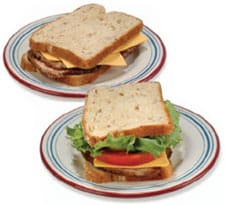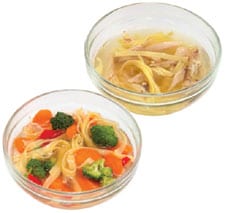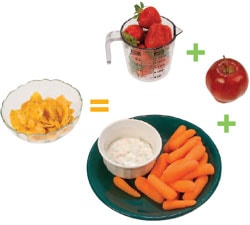Spring is a great time to clean up your closets — and your diet. As the weather warms and heavy soups, stews, and casseroles lose their appeal, start taking advantage of seasonal spring food, especially the fruits and vegetables that are so tasty in the earlier part of the year. It’s easy to follow a healthy diet when you incorporate spring food.
Seasonal food is a great food choice for several reasons. First, seasonal fruits and vegetables are at optimal flavor and quality. Second, they’re in abundance, so they cost less at the grocery store or farmer’s market. And third, they are more nutritious because they don’t sit around. Seasonal foods don’t have to travel as far or as long to our table as those grown in faraway locations.
Seasonal Food: What’s in for Spring
Which fruits and vegetables are seasonal? It can vary somewhat from region to region,but among my favorites are:
1.Apricots. Although many people enjoy dried apricots, they are also delicious served fresh, especially when chopped in a salad.
2.Asparagus. When visiting a grocery store in the spring, you’ll likely see displays of asparagus. For a delicious treat, fire up your grill: Spray asparagus spears with a little oil and sprinkle with salt, then grill them over a hot fire for about 5 minutes. Grilled asparagus should be brown in spots, but not charred.
3.Artichokes. They are one of the highest antioxidant vegetables around. Some people are intimidated by them, but they have no reason to be. To prepare an artichoke, tear off the outside leaves. Cut off the stems tips of the leaves and steam them in the microwave; serve drizzled with low-fat Italian dressing. Microwaving time depends on the amount. A large artichoke can take about 7 minutes, a small one only about 2 to 3 minutes.
4.Broccoli. Broccoli is always a good choice because it’s loaded with antioxidants and is high in fiber. You can serve broccoli steamed or sautéed, or try it raw in salads or for a crunchy snack.
5.Chives. Chives are one of the many seasonal herbs that are especially good in the spring.
6.Fennel. Fennel is available in early spring and also in summer and fall. It has a slight licorice flavor and adds a unique taste and crunch to salads. It is great grilled as well.
7.Greens. Spring greens include Swiss chard, mustard greens, and collard greens. Toss them in a salad for a wonderful springtime treat. Don’t hide their natural flavors under a heavy dressing. Instead, mix a splash of lemon juice with a high-quality olive oil.
8.Mango. One of my favorite spring desserts. Great source of vitamins.
9.Oranges. Oranges are a winter fruit, but they carry over into spring.
10.Spinach. Try spinach in place of lettuce in sandwiches, on burgers or in salads, or sauté spinach to serve as a side dish or in pasta.
11.Strawberries. Strawberries are available through early summer, but may be sweetest in spring. Add to spinich salad or top yougurt with it.
Seasonal Food: Get as Much as You Can
Spring weather can make it pleasant to grill outdoors, one of the healthiest ways to prepare food. Grill leaner cuts of chicken with asparagus for a tasty springtime dinner.
For a springtime breakfast idea, skip the heavy oatmeal and opt for a bowl of muesli soaked in low-fat milk and topped with fresh fruit. This will be more filling than a cold cereal because foods with high water content fill you up more.
No matter what time of year, you can incorporate lots of healthy fresh fruits and vegetables into your diet. Nutritionists recommend at least five servings each day, and spring’s bounty makes reaching this goal a snap. Fruits and vegetables that are nutritious and available year-round include potatoes, carrots, celery, bananas, and peppers, but you may want to shift your focus to seasonal foods when possible for the freshest taste.
 Lighten Up Your Lunch
Lighten Up Your Lunch Add in 1 cup of chopped vegetables such as broccoli, tomatoes, squash, onions, or peppers, while removing 1 cup of the rice or pasta in your favorite dish. The dish with the vegetables will be just as satisfying but have fewer calories than the same amount of the original version.
Add in 1 cup of chopped vegetables such as broccoli, tomatoes, squash, onions, or peppers, while removing 1 cup of the rice or pasta in your favorite dish. The dish with the vegetables will be just as satisfying but have fewer calories than the same amount of the original version.
